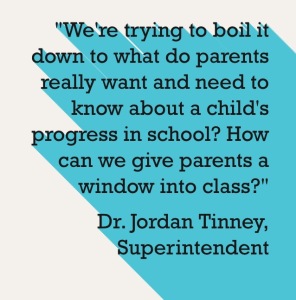
Co-Authored with Antonio Vendramin
Inquiry is a dynamic and emergent process that can foster a culture of collaborative learning with teachers working together to consider, explore, and reflect on issues and approaches related to shared questions and intentions. It has been said that when educators make their own discoveries, they become energized by the desire to inquire more deeply and to learn more broadly. You actually get the opportunity to not only ask questions, but also to delve deeply into these questions.
We think it would be safe to say that in the culture of openness, sharing, and genuine curiosity fostered in Surrey Schools, the process of inquiry has led some teachers into a state of dissonance. Dissonance, results as teachers pause and take a step out of their practice and become increasingly reflective. Teachers have called into question much of what they have always done in schools, and careful reflection and discussion, has led them to make responsive changes in practice as they work to better meet the needs of their students. We suspect teachers throughout the district continue to experience this so-called dissonance, and the unrest it has caused has resulted in thoughtful exploration around many topics, one in particular, communicating student learning.
We began by asking . . .
- What does exemplary communicating regarding student learning look like?
- Do our current tools and strategies adequately communicate the rich learning taking place in our classrooms?
- Do parents have the information they need to be the supporters of student learning that we want them to be?
- Do we hear the voice of students?
For the first time, we were equipped with the tools to create digital portfolios with learning evidence in the form of descriptive feedback, images, audio and video. Imagine giving parents the opportunity to see and hear their children in class engaged in activities that demonstrate their learning in almost real time. Parents can now be invited to look into their children’s classrooms, access activities, and see what their children are learning on their own time and schedules. No longer do they have to wait for the parent-teacher interviews, products to be brought home, or report cards. Teachers now had the tools to make this all happen.
But learning is messy; inquiry is a journey, and most journeys have bumps in the road. With digital tools in hand, it became easy for teachers to collect artifacts…too easy! Many digital portfolios became “media dumping grounds” and “glorified scrapbooks”. In the beginning, it was new and exciting. Parents loved to see their children smiling into the cameras, a beautiful piece of artwork, or a polished published story. As teachers began to question their collections and reflect on the goal behind digital portfolios, they asked themselves: How are we communicating student learning? It became clear that parents didn’t need more, they needed better.
Transformation calls for us to move past simple replication with technology. As our inquiry into communicating student learning continued, teachers had to ask themselves: Were they using these tools to document, show, change, and improve student learning? We had to move beyond the technology, and focus on the pedagogy and what we were really communicating to parents. If you take a picture of a spelling test and send that to a parent does anything really change? Can we justify sending an image of a student simply posing with some artwork which he or she created? If anything, this is a recipe for infuriating parents. As parents ourselves we’d be asking some pointed questions:
- Really, you spent $500 on an iPad for a teacher so that they could send me a photo of a spelling test?
- The artwork is great, but can you tell me why they created it and what they were supposed to learn?
- Why don’t I hear my son or daughter reflecting on what they learned?
It would be easy to be disappointed, to point the finger at technology, to make excuses, but the road forward is not paved with excuses. Rather, it is time to leverage the connections we have with teachers and to harness some of the exceptional exemplars we know exist. These exemplars are created and chosen by asking simple but serious questions whenever artifacts are collected and shared with parents.
Where is the learning?
If we describe learning as a change in behaviour (“I couldn’t do this before and now I can”, or “I used to do this but now I do this”, or “I used to think this but now I don’t because…”) we begin to think critically about what we capture and share. What we document should show what kids know, understand, and can do. What is captured and shared should show a child’s learning over time, changes and growth in his or her ability to communicate, think, and build his or her capacities of self as a learner.
Here are some examples of teachers and students talking about changes in behaviour:
Students making learning visible by explaining their thinking:
Student reflecting on their work over time: 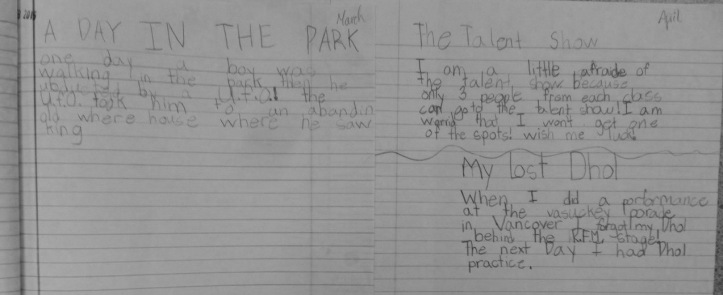
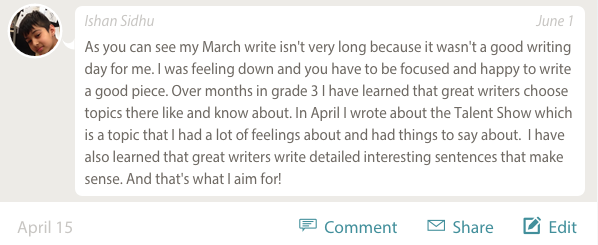
Students engaged in conversations about their learning:
What is worth sharing?
Our parents know their children best. Often times, parents are able to share with teachers, what their children can do. We believe parents want to know how their children are changing, both in how they act and how they think. Parents also want to support their child at home. We can help parents provide better support by showing and communicating to them not only WHAT their child is learning, but WHY. At the same time, if we provide the criteria behind what is shown in the portfolio so students and parents both know what “good” looks like we can help move parents to deeper understandings of the “whys” behind the learning tasks. And, to go further, if we include descriptive feedback prior to summative assessments we can provide parents with meaningful data they can use to assist in the intervention process.
Here are some examples of teachers sharing this kind of valuable information:
Explaining to parents how they can support their children’s learning:
Sharing criteria and exemplars with parents: 

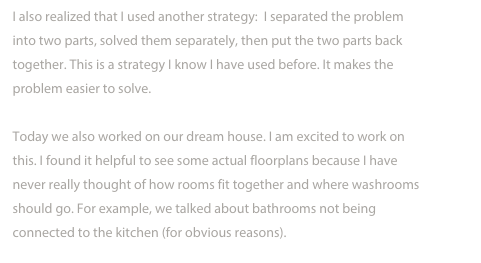 Explaining to parents WHAT students are learning and WHY:
Explaining to parents WHAT students are learning and WHY: 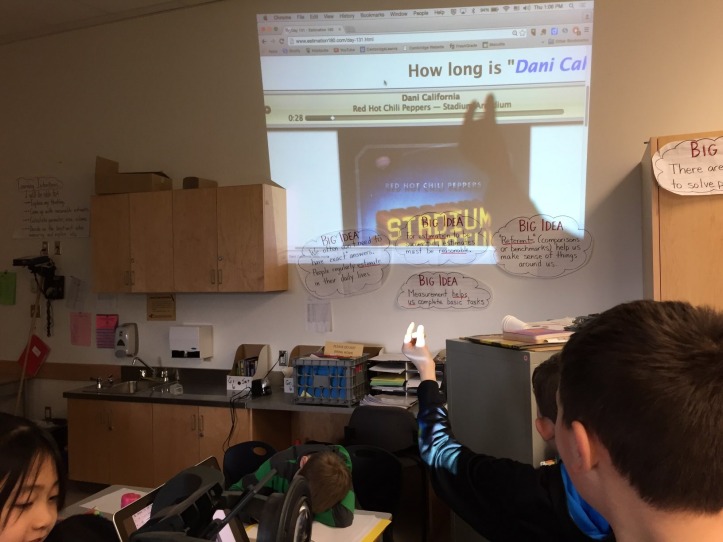
When teachers suddenly found themselves with the ability to easily capture evidence with their devices, they thought they had to capture everything. Not only did this inundate parents, it overwhelmed teachers. We didn’t collect and share everything before; why start now? How much we collect and share is a discussion we are currently engaged in. For us, it comes back to Jordan Tinney’s quote cited at the start of our post, “We’re trying to boil it down to what do parents really want and need to know…”
True, different parents want different things, but we believe all parents want to know if their children are learning and progressing. They want to know if their children are having difficulty and struggling in their learning. They want to know what the teacher is doing and what they as parents can do at home to help their children be more successful. And mostly, parents want to know that their children are cared for, safe and respected, and liked by others. Through thoughtful digital portfolio collections, parents can be reassured that the teacher really understands and knows their child and is helping them learn and succeed.
As we continue this journey of inquiry into communicating student learning, we have become connected in our desire to improve our understandings and practices and to continue to reflect on what we know, what we do, and how this relates to student learning. We are ready for more dissonance and more questions as we develop better and more meaningful ways to help students learn so we indeed have the data and documents to capture and collect and share with parents. This is our challenge!

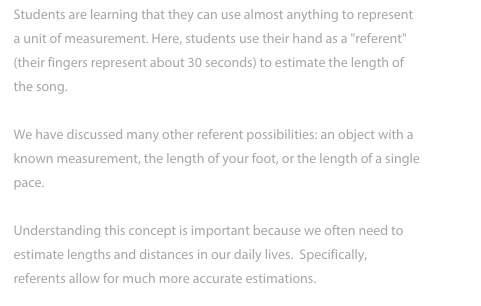
After my first year of Fresh Grade I can relate to so much of this!
THANK YOU, Kelli! I so appreciate the candor, passion and hope that you’ve shared. I love the way you want us to build on our own strengths, as teachers, knowing that we can always professionally grow, develop and hone our expertise and confidence. I will definitely be sharing this blog ….
Such a great post and one I will share often with my friends who are not aware of how digital portfolios can be used to document learning.
Terrific post sharing the insights gained into student thinking through the use of digital portfolios.
[…] This article was previously published in Teaching and Learning with Heart. […]
[…] article was previously published in Teaching and Learning with Heart. Kelli Vogstad @KelliVogstad and Antonio Vendramin @Vendram1n from British Columbia present […]
[…] Her concerns align with the thoughts in a post by my colleague and friend Kelli Vogstad titled Digital Portfolios: Moving beyond the Glorified Scrapbook. When I review the big ideas with paper based portfolios as described by researchers such as […]
[…] I have seen first hand how and why our digital portfolios have become more than just a collection of activities and tasks; they have become tools of assessment that weave together the voices of the teacher, the student, and the parent. Using the Fresh Grade digital tool, student portfolios have become living documents as we work together discussing, planning, reflecting on the evidence of learning, and setting shared goals for future learning. I believe this process has been instrumental in moving our digital collections beyond glorified scrapbooks. (https://kellivogstad.com/2015/07/09/digital-portfolios-moving-beyond-the-glorified-scrapbook/). […]
This blog post was shard with me by David Haight at Fresh Grade. He also shared 2 others of yours that you may see me comment on later. I am at a small school in Northern Alberta and am the only one using a digital portfolio. I have felt so lost at times and have struggled with what to post and why I post the things I do. This was very enlightening and encouraging. I too wondered why I posted spelling tests and what value my students and parent are getting from using Fresh Grade. This has helped clear my vision for what my classes digital portfolios should be.
Thank you for passing on your learning and wisdom on the subject.
This blog post was shard with me by David Haight at Fresh Grade. He also shared 2 others of yours that you may see me comment on later. I am at a small school in Northern Alberta and am the only one using a digital portfolio or any kind of portfolio for that matter.
I have felt so lost at times and have struggled with what to post and why I post the things I do. This was very enlightening and encouraging. I too wondered why I posted spelling tests and what value my students and parent are getting from using Fresh Grade. This has helped clear my vision for what my classes digital portfolios should be.
Thank you for passing on your learning and wisdom on the subject.
Hi Johnathan, I’m happy to hear you found them helpful, and thank you for your kind words. Where in Northern Alberta are you? What age group do you teach? All the best and have fun with your portfolios.